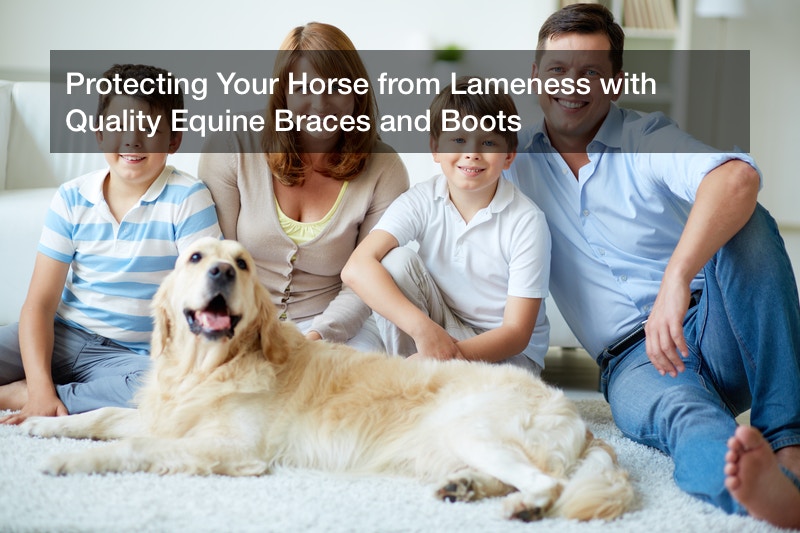
If you’re into equestrian activities and sports such as horseball, polo, jareed, pato, eventing, reining, dressage or showjumping, horse lameness is inevitable and its often not a case of if it will happen, but when. Equine lameness causes the horse to move with a lot of difficult and is caused by neurologic or mechanical dysfunction due to injuries, degenerative diseases, and diet. When your horse is injured, posture is often the first clue something is wrong. This can include shifting its weight from side to side, refusing to move, and refusing to bear weight. For this reason, it’s important to consider horse leg braces which are designed to address a range of foot-related lameness issues such as tendon and ligament injuries.
Types of Foot Related Lameness
Studies have shown that most causes of equine lameness emerge from the horse’s foot. Unlike competitive horses used for sports, domesticated horses that spend most of their time in paddocks and stables are more vulnerable to a number of hoof and foot problems.
Foot Wounds
Foot wounds are common in horses, especially the competitive ones, and if not addressed promptly can cause the condition to worsen due to infections and formation of abscesses, which can later lead to lameness.
Foot Conformation
Poor foot conformation and hoof imbalances are known to affect proper weight distribution from the horse to the ground causing structural problems on the foot. At first, lameness is not a problem and can be easily ignored. However, as the injuries on the internal foot structures worsen, you may start to notice reduced movements on your horse characterized by stiff and small shuffling gait. This makes it difficult for a horse to move and function normally.
Navicular Disease
Another common cause for lameness in horses is a navicular disease that affects the navicular bone and the adjacent tissues. This often affects the front legs of the horse and it mainly occurs when the foot is subjected to stresses arising from hard stops and sudden changes in direction at high speeds.
Rocks
Rocks and other hard surfaces can damage the sole of the horse causing it to limp and have a problem moving normally if not addressed quickly. Chronic sole bruises can result in a serious foot infection and formation of an abscess which causes severe inflammation of the coffin bone, a condition called pedal osteitis.
Canker
Improper foot care can cause horse lameness, especially when the horn tissues of the foot are severely infected. This condition is known as canker, and it initially begins at the frog and later advances to the sole or the hoof wall. The infection usually happens when the horse stands in a contaminated pool of water.
Considering lameness in horses is caused by a number of factors, it’s usually a challenge to determine the actual cause. Issues such as diet, diseases, diet injuries, and foot conformation all contribute to horse lameness, which significantly impairs proper movement. That’s why it’s recommended to have an equine veterinarian look at your horse to identify the root cause of the problem and advise the most ideal treatment.
You may need to invest in different horse leg braces depending on the horse’s condition. If your horse suffers from an arthritic problem, whether it’s acute or infectious, consider knee braces for arthritic knees. Therapeutic equine horse boots are ideal for treating congenital and acquired lameness while back and knee brace serves as support brace that help protect foot-related lameness. Horse leg braces are essential in treating lameness general foot disabilities.
More:
knee brace for horseback riding, knee support for horses, back on track knee brace size chart, best knee support boots, boots knee support, broken knees in horses, cap center carpi, fluid lump on horse’s knee, fluid on horses knee, horse knee pads, knee problems in horses, miracle knee brace, miracle knee support reviews, over at the knee horse conformation, over at the knee horse conformation problems, slab fracture horse knee, swollen joints in horses, therapeutic horse knee boots, treating knee injuries in horses, back on track physio knee brace, carpal hygroma horse.
